As a woman living alone, personal safety is likely a top concern, that’s why finding the best guard dogs for women is a way of protection. While home security systems and other precautions can help, nothing beats the protection and companionship of a loyal canine companion. With so many breeds to choose from, it can be tricky to select the perfect protector. But there are certain traits that make particular dogs well-suited for the job.
In this article, we’ll explore the best guard dogs women and what to look for when choosing your new live-in bodyguard and friend.
Table of Contents
Why Women Living Alone Should Consider a Guard Dog
As a woman living alone, your safety and security should be top priorities. One of the best ways to protect yourself and your home is by getting a guard dog. Guard dogs are bred and trained specifically for protection and deterring unwanted intruders.
Deter intruders
The mere presence of a guard dog can deter intruders from targeting your home. Burglars and intruders would rather break into a home without a dog. Guard dogs also have intimidating barks, growls and an aggressive stance that will scare off most intruders. Their size and bark alone act as a strong deterrent against unwanted visitors.
Provide protection
Guard dogs provide an active defense system for your home. They are alert and attentive, trained to detect and alert you to any suspicious activity. At the first sign of an intruder, a guard dog will start barking to scare them off and alert you. They can also physically defend you by attacking on command or if they perceive you to be in danger. For maximum protection, choose a larger breed with an intimidating appearance and bark, such as a German Shepherd, Doberman or Rottweiler.
Constant companionship
In addition to protection, a guard dog provides faithful companionship. As a woman living alone, having a furry friend by your side can help ease feelings of isolation and vulnerability. Guard dogs are intensely loyal and bond very closely with their owners. They will keep you company when alone at night or away from home, providing both security and friendship. An guard dog gives you a sense of comfort and security knowing your faithful four-legged companion is there to watch over you.
Train and socialize
For the best protection, choose a dog breed that has strong guarding instincts and train them thoroughly. Guard dogs should be properly socialized from an early age to be non-aggressive towards friendly strangers and visitors. With professional training, guard dogs can learn to be vigilant and defensive but also remain friendly towards non-threatening individuals. Early positive exposure to many different people and situations will help ensure your guard dog is well-adjusted, obedient and able to differentiate friend from foe.
Top Qualities to Look for in the Best Guard Dogs for Women
Size and strength
Look for a dog with an intimidating size and strength. Large breeds like German Shepherds, Rottweilers, and Dobermans make excellent guard dogs due to their powerful builds. While small dogs can be feisty, they may not actually deter intruders or defend you effectively in a dangerous situation. A bigger dog’s size alone acts as a deterrent against potential threats.
Loyalty and protectiveness
Choose a breed known for being loyal, protective and territorial. Guard dogs should form a strong bond with their owners and see your family as their pack to defend. Breeds like Bulldogs, Mastiffs, and Cane Corsos are natural protectors of their homes and families. With proper socialization and training, these dogs can be affectionate towards their families while still serving as effective deterrents against intruders.
Energy level
Look for a breed with a moderate energy level. While high-energy dogs may seem appealing, they require an active lifestyle to behave well which can be difficult for many owners to provide. An overly energetic guard dog may become restless, agitated or even aggressive without enough activity and attention. Breeds with a more moderate energy level, such as Boxers, Schnauzers, and Rhodesian Ridgebacks, make ideal guard dogs as they remain watchful and attentive but don’t have unrealistic exercise needs.
Trainability
Choose a breed that is intelligent and responsive to training. Guard dogs require extensive training to learn how to properly defend, deter intruders or alert their owners to threats. Breeds that are easy to train, such as German Shepherds, Labradors, and Golden Retrievers, make the best guard dogs as their natural skills can be honed through training. Look for breeds that were originally bred as working dogs, as they have a strong desire to please their owners and protect.
With the right breed by your side possessing these key qualities, you’ll feel safer at home knowing you have a loyal protector keeping watch. But remember, proper training and socialization from an early age are also required to ensure your guard dog serves and behaves well.
The 5 Best Guard Dog Breeds for Women Living Alone
German Shepherd
The top one out of five best guard dogs for women comes the German Shepherd which is considered a very popular police dog and an excellent guard dog breed. They are intelligent, loyal, and protective of their owners. German Shepherds can deter intruders simply due to their intimidating presence and loud, deep bark. They are easy to train as guard dogs and will alert you to any strange noises or intruders. However, they require daily exercise and attention, so make sure you have the time to properly care for a German Shepherd before getting one as a guard dog.
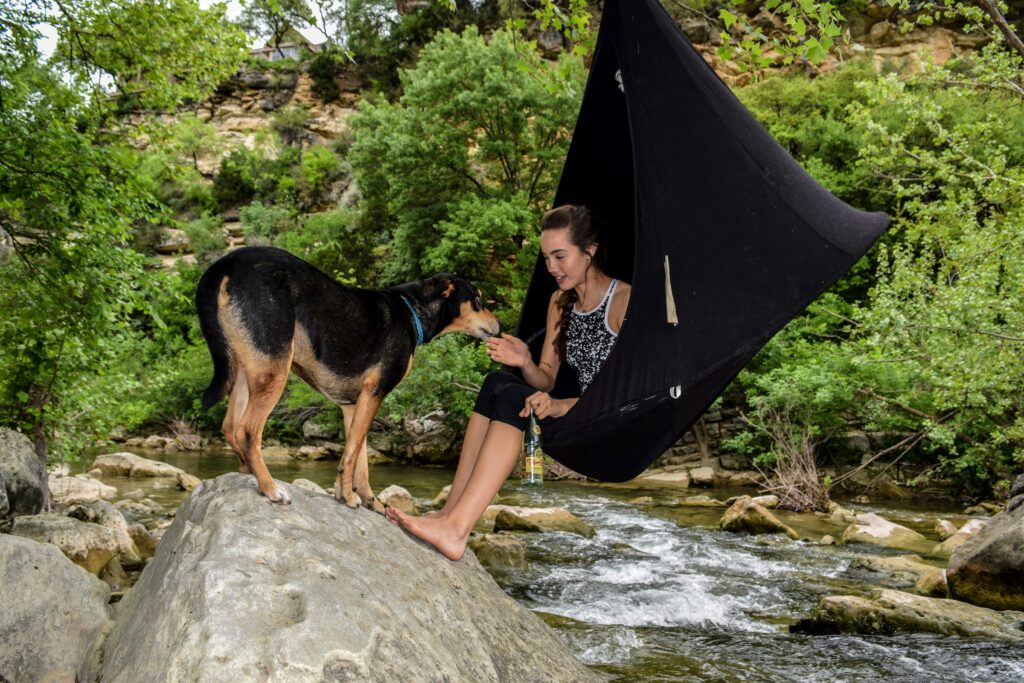
Doberman Pinscher
The top two out of five best guard dogs for women comes the Doberman Pinschers which were originally bred as guard dogs and still make excellent protectors today. They are fearless, alert, and intensely loyal to their owners. Dobermans will deter unwanted visitors just by their imposing size and appearance. They have a loud, deep bark and will not hesitate to defend their home and family if threatened. However, Dobermans require daily attention, exercise, and training to become well-behaved guard dogs. They can be aggressive if not properly socialized and trained.
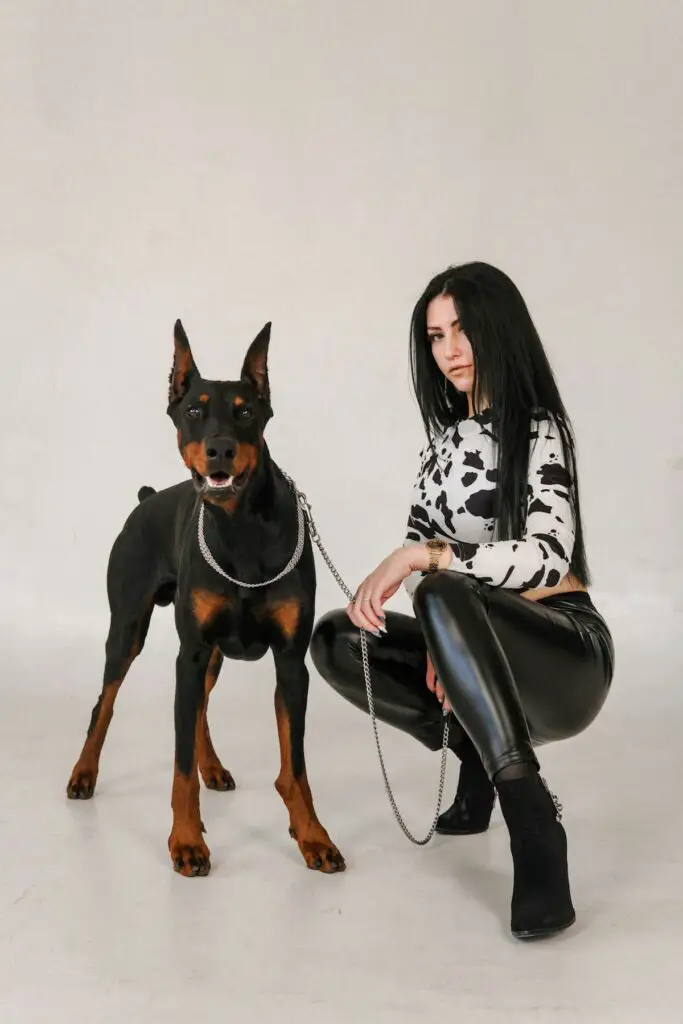
Rottweiler
The top three out of five best guard dogs for women comes the Rottweilers, the natural guard dogs because they are alert, confident, and territorial. They have an intimidating appearance and deep, loud bark that will deter intruders. Rottweilers form close bonds with their owners and are fearless in defending them if threatened. However, Rottweilers require experienced, patient owners and extensive socialization and obedience training from an early age. Without proper care and training, they can become aggressive or protective of their territory.
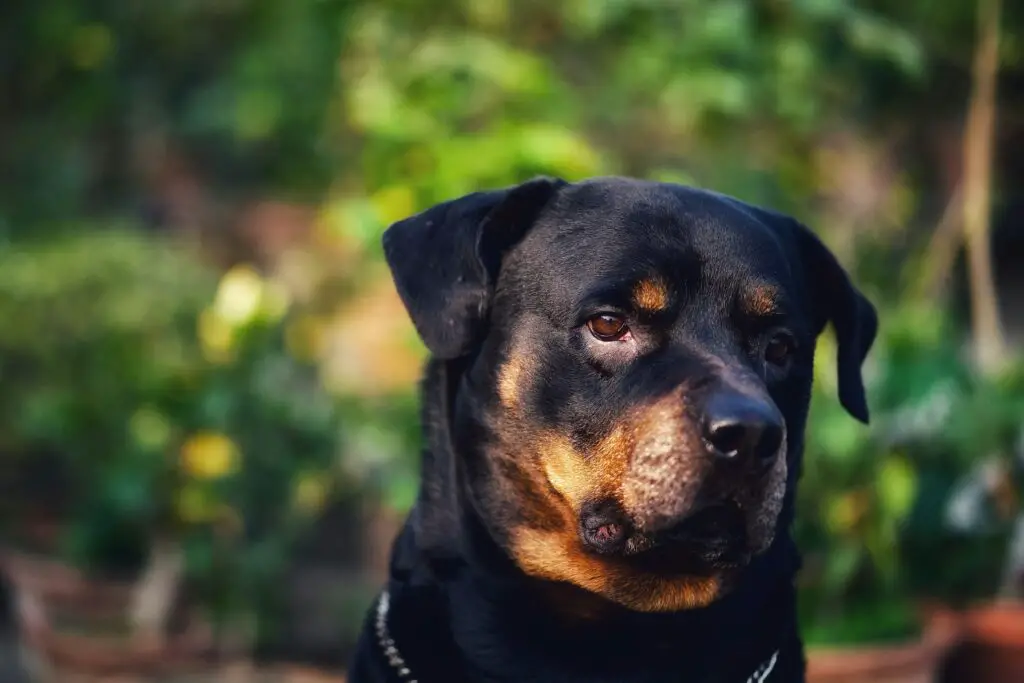
Bullmastiff
The top three out of five best guard dogs for women comes the massive Bullmastiff the most famous with a natural instinct to guard and protect. They are alert, territorial, and have an intimidating size and appearance. Bullmastiffs form close bonds with their families but are wary of strangers and will deter unwanted visitors simply due to their size and booming bark. However, Bullmastiffs require daily exercise and attention. They can become aggressive or destructive if not properly trained and socialized from an early age.
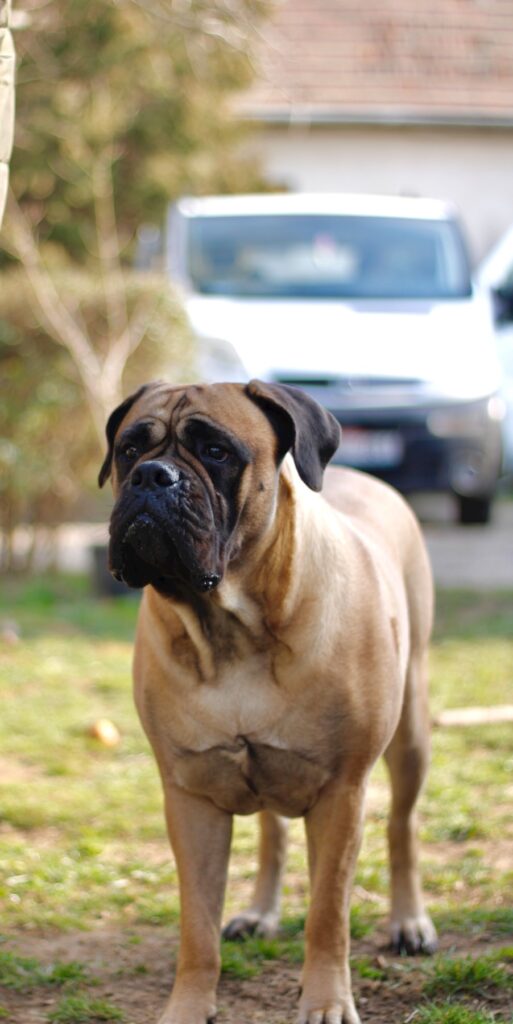
Rhodesian Ridgeback
The top four out of five best guard dogs for women comes the Rhodesian Ridgeback which was originally bred as a guard dog in South Africa. They are loyal, protective of their territory, and have a deep, booming bark. Rhodesian Ridgebacks will alert you to any intruders and deter unwanted visitors due to their size and appearance. However, they require daily exercise and attention to become well-behaved guard dogs. Without proper care and training, Rhodesian Ridgebacks may become aggressive or protective of their home.
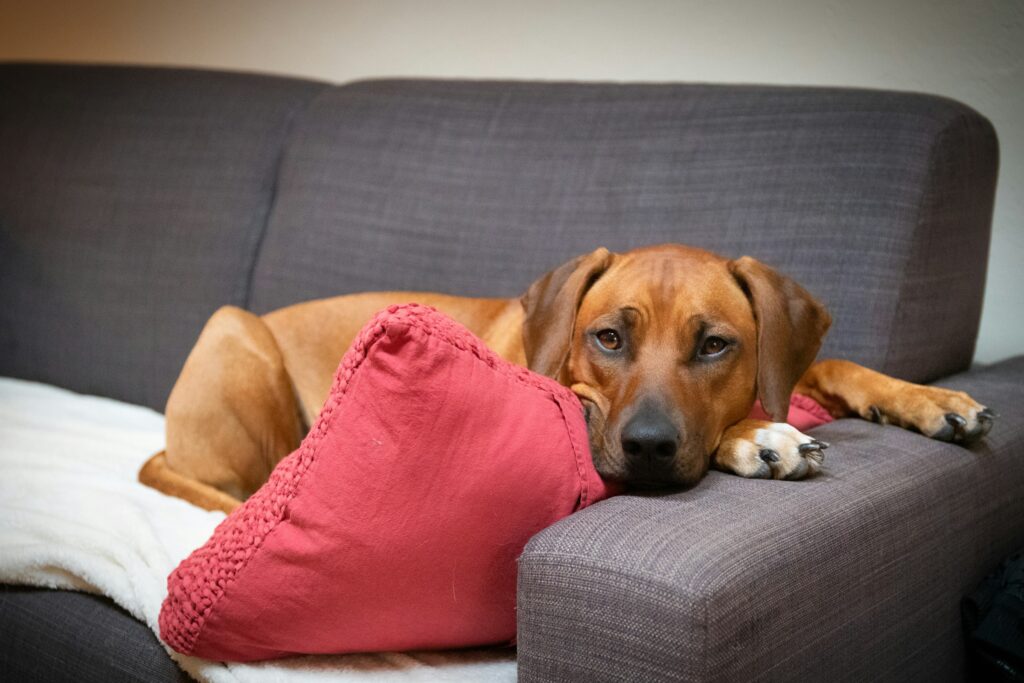
Training and Socializing Guard Dogs for Optimal Protection
As an independent woman living alone, choosing a guard dog is an important decision. However, the breed and temperament of the dog is only part of the equation—proper training and socialization from an early age is essential. Early positive exposure ranges
from 8 to 12 weeks old, so it is important to expose your guard dog to new people, experiences, and environments in a positive, controlled setting. Invite friends over, take the dog on walks, and engage in play. This helps your dog become accustomed to strangers and prevents fear aggression and territorial behavior. Make sure all experiences are positive and reward your dog for friendly behavior.
Basic obedience
Teach your guard dog basic commands like “sit,” “stay,” “leave it,” and “come.” Use positive reinforcement techniques, not punishment. These commands will give you control in any situation. Work with a professional trainer for the best results.
Alert barking
You want your guard dog to bark when strangers approach or enter your home, but to stop on command. Teach your dog the “quiet” command and only give the treat or reward when they stop barking. Practice by having friends approach and enter your home. Reward and praise your dog when they alert you, but then give the “quiet” command.
Friendly to friends
Instruct your guard dog that your close friends and family are allowed to approach and enter, even when you are not present or in another room. Have these friends walk by, knock and enter, give treats and rewards. This reinforces that alerting only applies to strangers, not known individuals.
Continuous practice and reinforcement is required to optimize your guard dog’s protection skills. Be patient through the process and understand that properly training a guard dog can take 2 years or more. Proper precautions should still be taken for maximum safety. But with dedication, you will develop a loyal companion that will alert you to danger while also discriminating accurately between friend and foe.
Creating a Safe Home Environment With Your Guard Dog
As a woman living alone, having a guard dog can give you peace of mind about home security. However, simply owning a guard dog breed is not enough. You need to properly train and care for your dog to create an effective deterrent against intruders.
Select an Appropriate Breed
Choose a breed that is naturally protective, loyal, and aggressive towards strangers, such as German Shepherds, Dobermans, or Rottweilers. These breeds are often used as police or military dogs due to their guarding instincts and intimidating size and appearance. However, they require experienced owners who can properly socialize and train them.
Establish Yourself as the Alpha
You need to establish yourself as the pack leader to gain your guard dog’s respect and trust. Use positive reinforcement training, set clear rules and boundaries, and be consistent and firm in your commands. Your dog should look to you for direction in any situation.
Train Basic Obedience and Guarding Commands
Teach your dog basic obedience to ensure they listen to you, as well as specific guarding commands like “attack”, “guard”, and “stand down”. Use professional training if needed. Practice these commands regularly to reinforce them. Your dog should respond immediately in a potential threat situation.
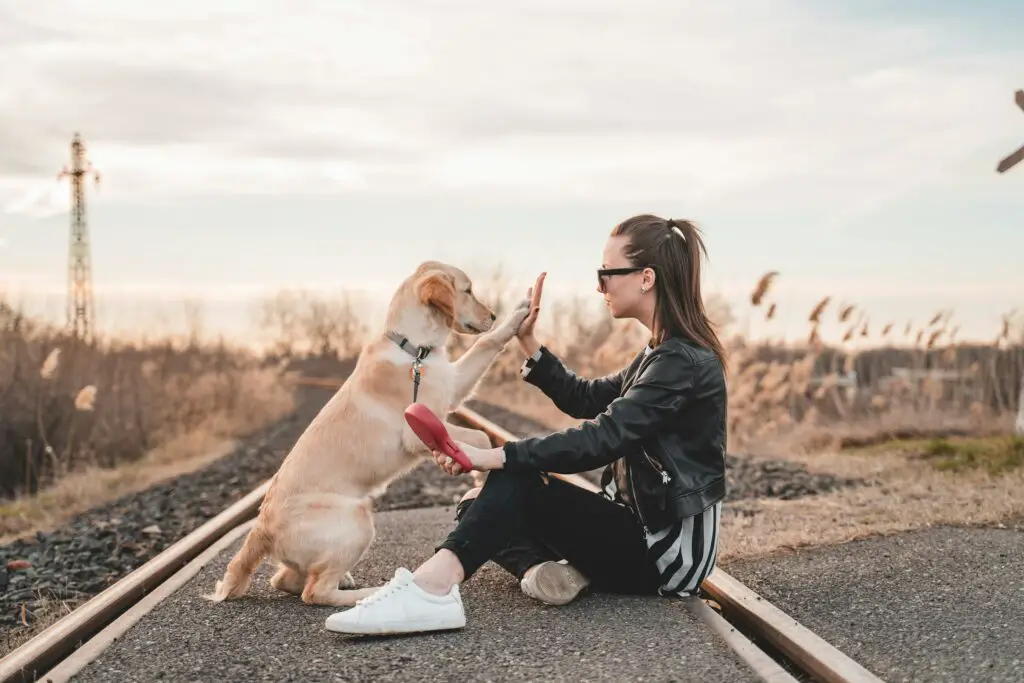
Provide Security Measures
Install additional home security measures like alarms, motion-activated lights, and security cameras. This will deter intruders and also alert your guard dog to any suspicious activity on the property so they can respond accordingly.
By selecting an appropriate breed, training them diligently, and making your home less of an easy target, a guard dog can be one of the best defenses for a woman living alone. However, it is important to exercise caution and be fully prepared for the responsibility that comes with owning a canine protector before getting a guard dog.
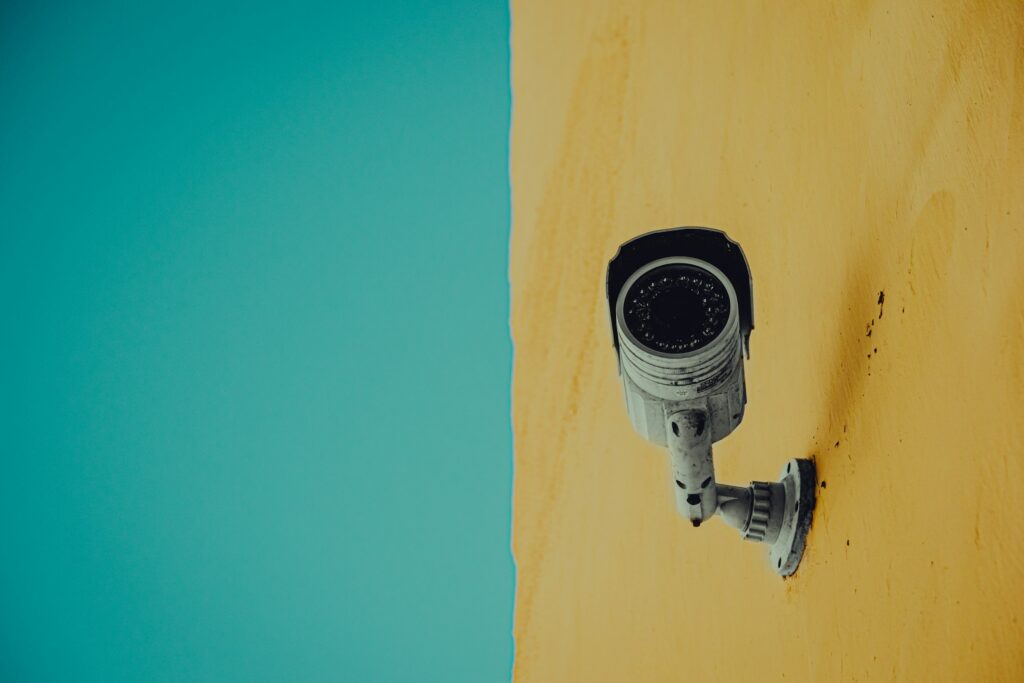
Outfitting Your Guard Dog for Duty
To properly outfit your guard dog for their important job of protecting you and your home, you’ll need to invest in a few key items.
A sturdy collar and leash are essential for walking and controlling your guard dog. For a guard dog, a harness can actually make them feel more restricted, limiting their ability to act quickly in an emergency. A strong collar and leash in a highly visible color will give you full control over your dog in any situation.
A ‘Beware of Dog’ sign placed prominently on your property will deter intruders and warn others that you have a guard dog on the premises. Be sure to check your local regulations regarding the language and placement of these signs.
For nighttime duty, your guard dog will need special equipment. An illuminated collar allows you to see your guard dog in the dark from a distance. Their eyes will already be well-adapted to night vision, but the light helps you keep track of their location and activity. Motion-activated lights, especially those with an audible alarm, can be triggered by your guard dog’s movements to startle and scare off prowlers.
In extreme weather, your guard dog will appreciate protective gear like insulated vests, coats and booties to keep them comfortable while on patrol. These items should not restrict their movement or sensing abilities, however. Only leave them on when your guard dog is on active guard duty.
While training and bonding with your guard dog is the most important step, providing them with the proper equipment for their job will make them even more effective in protecting you and your home. With the right gear for all conditions, your guard dog can serve as an excellent first line of defense against unwanted intruders day or night. Their mere presence, combined with warning signs and protective equipment, acts as a strong deterrent against potential threats to your safety and security.
Integrating Your Guard Dog Into Your Lifestyle
As an independent woman living alone, having a guard dog can provide peace of mind and security. However, adding a dog to your life is a big responsibility that requires commitment and adjustments. Consider how a guard dog will fit into your daily routine and living space.
You’ll want to establish rules and boundaries right away to ensure your dog understands their role as a protector and companion. Enroll your dog in professional training classes to learn commands like “guard,” “protect,” and “stand down.” Practice these commands during training sessions and also in real-world scenarios. For example, have friends knock on your door or rattle your gates to help your dog recognize normal and potentially threatening sounds.
Make sure your home environment is suited for a guard dog. Securely fence in your yard and consider an electronic fence system for extra protection. Your dog will need access to food, water, shelter, and opportunities for exercise and bathroom breaks. Consider installing a dog door or making other arrangements if you work long hours. Guard dogs require attention, affection, and mental stimulation to prevent behavioral issues.
Socializing your guard dog is also important. Invite friends and family over to interact with your dog so they become accustomed to familiar faces. Early positive socialization will help prevent over-guarding and aggression towards non-threatening visitors. However, always properly introduce your dog to new people in a controlled setting.
With the right training, environment, and socialization, a guard dog can be a devoted protector and companion. But they are a long-term commitment that requires patience and responsibility. Make sure you understand a guard dog’s needs before bringing one into your life. If you provide a loving yet disciplined environment, your guard dog will become a trusted friend keeping watch while you sleep soundly at night.
Affording and Caring for Your New Guard Dog
As a woman living alone, a guard dog can provide companionship and help ensure your safety. However, guard dogs require a major time and financial commitment to care for properly. Consider these factors before getting a guard dog:
Cost
Guard dog breeds can be expensive, often $500-$1500 or more for a puppy. You’ll also need to budget for quality dog food, medical care, training, grooming, and other essentials which can total $1000-$5000 per year or more. Make sure you understand all the costs involved to avoid being overwhelmed financially. If money is tight, consider adopting an adult guard dog from an animal shelter or rescue group. They’ll already be trained, socialized and possibly microchipped.
Housing
Guard dogs require space, especially large breeds. Do you have a fenced yard? If not, you’ll need to take the dog out frequently for exercise and toileting. You’ll also need room for a kennel, dog bed, food and water bowls, and toys.
Time Commitment
Guard dogs demand attention and exercise. Are you willing to commit the time for training, socialization, play, grooming, and vet care? Many guard dogs experience separation anxiety or behavioral issues if left alone for long periods. You’ll need to spend quality time with your dog daily to prevent these problems.
Responsibility
A guard dog is a big responsibility. You’ll need to properly train, socialize and care for your dog to ensure they behave well around people and other animals. Never encourage aggressive behavior. Keep your yard secure to prevent them from escaping, and be sure to license and microchip your dog in case they get lost. Providing a safe, loving home for a guard dog can be very rewarding. But go into dog ownership with realistic expectations of the responsibility required to properly care for them. If you make the necessary commitment, a guard dog can make a wonderful companion and help provide protection for years to come.
FAQs: Answering Common Questions on Best Guard Dogs for Women
As a woman living alone, you likely have some concerns about safety and security. A guard dog can provide protection, act as a deterrent against intruders, and give you peace of mind. However, choosing and caring for a guard dog is a big responsibility. Here are some frequently asked questions to help you determine if a guard dog is right for you.
What breeds make the best guard dogs?
Some of the top breeds for guarding and protecting homes are:
- German Shepherds: Intelligent, loyal, and protective. German Shepherds are natural guard dogs and police dogs.
- Doberman Pinschers: Fearless, energetic, and intimidating in size and appearance. Dobermans were originally bred as guard dogs.
- Rottweilers: Powerful, territorial, and have a loud bark. Rottweilers can deter even the boldest of intruders.
- Bullmastiffs: Large, devoted, and courageous. Bullmastiffs were bred to guard estates and will protect their home and family.
- Belgian Malinois: Alert, hardworking, and have a keen sense of hearing. Belgian Malinois are often used as police dogs and military dogs.
How much do guard dogs cost?
The initial cost of a guard dog can vary significantly based on the breed and whether you adopt from an animal shelter or buy from a breeder. In general, you can expect to pay between $500 to $1500 for a guard dog from a shelter. Buying a guard dog from a reputable breeder will typically cost between $1000 to $3000 or more, depending on the breed. The most expensive breeds are usually German Shepherds, Belgian Malinois, and Doberman Pinschers.
How much time do guard dogs require?
Guard dogs are working animals and require daily attention, exercise, training, and bonding with their owners. You will need to commit to walking, playing with, grooming, and training your guard dog for at least 1-2 hours per day. They also need access to a yard for additional exercise and opportunities to guard the perimeter. Without proper care and attention, a guard dog may become bored, frustrated, and less responsive as a protector.
Are guard dogs safe to have around children and families?
Guard dogs that are bred and trained to be protective can be safe around children and families. However, they require extensive socialization and training from an early age to become accustomed to and tolerant of children, strangers, and other pets. Close supervision of interactions between guard dogs and children is also important, especially at first. With the right owner commitment to training and socialization, many guard dog breeds can become beloved family members. However, some breeds may be better suited as estate or property guardians only.
Conclusion
At the end of the day, the best guard dogs for a woman living alone is the one that makes her feel the most secure and loved. Take your time researching breeds, meeting potential pups, and making sure you have the time, energy, and resources to properly train and care for your new furry protector. While certain breeds like German Shepherds and Rottweilers have instincts to guard, socialization and bonding are just as key. Pick a dog with an alert, loyal, and affectionate personality. And remember, while an intimidating bark and size can deter intruders, a guard dog’s job is ultimately to alert you of danger – not attack.








